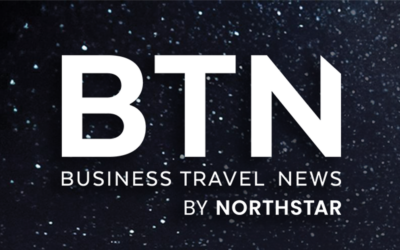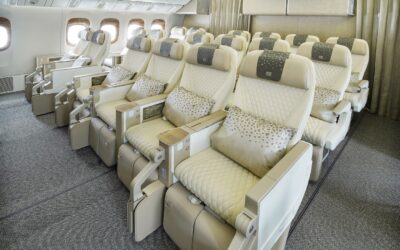
Condor’s Mikko Turtiainen discusses:
- The carrier’s transatlantic route changes
- The effect of its new widebody fleet
- A push for the corporate market
Germany-based Condor Airlines in late 2024 made the decision to cut flights between Frankfurt and six North American cities—Baltimore, Minneapolis, Phoenix and San Antonio in the U.S., and Edmonton and Halifax in Canada—after a German court ruled Lufthansa didn’t have to provide Condor commercial access to European feeder routes through Frankfurt. In response, the carrier in March introduced nine new routes, including intra-Germany flights and destinations within Europe. It also continues to operate from nine U.S. and three Canadian cities. In addition, the carrier has extended some routes from seasonal to year-round. Condor director of sales for the Americas Mikko Turtiainen spoke with BTN senior editor Donna M. Airoldi about these route changes, the carrier’s new fleet and how it plans to capture more corporate market share. Edited excerpts follow.
BTN: This March marked the first time that Condor has operated intra-Germany flights. What led to that decision?
Mikko Turtiainen: The background of Condor is really for that leisure industry. We’ve been flying intra-European flights previously, but they’ve been to holiday destinations, not to the cities that serve all the different segments. … These city flights to the mainland European destinations are new in the sense that this opens up the variety of different segments. That’s where the big difference is for our European flying. We’ve had a narrowbody fleet basically for as long as Condor has been out there. But the fleeting with the new [Airbus] Neos, it’s something that also is broadening our focus in regards to where we’re flying in Europe.
[Since the interview, Condor announced three additional European routes to launch May 1, 2026.]
At the very core is the widebody Neos coming into our network that gave us the product that allows us to be part of the corporate community. … Once we had that, that’s when we also started to really put more focus and emphasis into working within the whole corporate community.”
BTN: How did the demand for corporate travel in general and from North America influence the decision to expand your routes?
Turtiainen: it’s kind of like a chicken and the egg in that everything happens slightly at the same time. I still think that at the very core is the widebody Neos coming into our network that gave us the product that allows us to be part of the corporate community. … Once we had that, that’s when we also started to really put more focus and emphasis into working within the whole corporate community. Working with [travel management companies], agencies who are really focused toward corporate travel, starting to cold call companies, naturally, companies that have a strong German link to them and also a European link to them. But as we know, corporates usually like nonstop. It’s our flagship product, the nonstop into Frankfurt. Naturally, German companies know Condor. [But] they’ve known Condor more for the leisure aspect. So even for them, it’s been a bit of a new type of news that we’re also now working very closely with the corporate community, and we have a product to offer them.
BTN: Tell me about the new fleet.
Turtiainen: The big change that has happened post-pandemic is Condor’s bold decision to invest in new aircraft. … We made the decision to invest into Airbus Neos, both widebody as well as narrowbody. And now post-pandemic, we’re seeing the fruits of this decision.
2025 is the first year that all of our flights over the Atlantic are with brand new Airbus 330-900s. Summer ’24 was the first summer that we had the Neos, but 2025 is the first year when each and every flight during the entire year is with the brand-new Neo. And the Neo is configured in a way that it’s also at the core of our strategy because our widebody Neo has 310-seat capacity. And 94 of those seats are premium. So, we have 30 in business class and 64 in premium economy.
And this has really been configured in a way that it really talks to passenger segments in a different way than what we had pre-pandemic. And the business class, it checks all the boxes on what corporate travelers desire and want from a flight. It has one-to-one configuration, which means easy aisle access for all passengers. They are full lie-flat beds. The service is one that’s geared toward business-class travelers. And the bonus [is] we have very attractive pricing.
[Condor currently operates 18 Airbus A330neo aircraft with three on order. After this interview, it placed an order for four more, with three to be delivered by the end of 2027. That makes for a total of 25 planes to be operational by 2031.]
BTN: What else has changed for your corporate business?
Turtiainen: As you see some successes and some wins within the corporate community, then you start to think, OK, what do we need to do to even improve our position within that community? One that we’re working on is having a more balanced network throughout the year. This is a long-term vision, but we are flying more during the winter now than we were when I joined two years ago. I think offering Condor-to-Condor connectivity to some of the commercial centers in Europe: Frankfurt, it’s a financial center; Munich is a powerhouse for a lot of corporates. So having [that] connectivity from North America to these two cities is huge. Hamburg is known for the shipping industry. Berlin, it’s a government administration city that has a lot of maybe SME type companies. Also, Milan, it’s a corporate powerhouse in Italy with fashion and design. Paris, it talks to all segments. So now having connectivity to these cities with a stellar product out of North America, it’s come as a next step in the development.
Having this first-time opportunity to sell Condor-to-Condor connectivity, it really puts us in a different level when we look at distribution of schedule and prices. When I talk about distribution, I’m talking about online booking tools, I’m talking about the [global distribution systems]. But having [that] connectivity, it puts you in a completely different type of visibility within these distribution channels. It definitely improves how we come up in the different [online booking tools] as well as the GDSs.
Some corporate travelers have said that they are more willing to buy with loyalty not being the focus point if they’re able to get a good product at a good price, that will actually be more important than flying business class with the loyalty [carrier.]”
BTN: Do you have a loyalty partner?
Turtiainen: We work closely with Alaska [Airlines], and we have a deep cooperation where when you fly Condor, you’re able to accumulate Alaska points, and you’re able to also burn Alaska points on Condor flights. [Condor does not have its own loyalty program.] Especially on the West Coast, it’s a very strong partnership.
The feedback that I’ve been getting is that there’s a portion of corporate travelers, especially those who have a lot of points, [who] say that they’re frustrated, that where they would like to use those points they have with other airlines is for upgrades basically. And getting upgrades confirmed is a challenge. Some corporate travelers have said that they are more willing to buy with loyalty not being the focus point if they’re able to get a good product at a good price, that will actually be more important than flying business class with the loyalty [carrier], because at the end of the day, they’re aware that they’re probably not going to be able to use the loyalty points for upgrades anyway. I think that’s interesting. That’s kind of benefiting Condor. Loyalty still matters, but basing your purchasing on price and product and less emphasis on loyalty is increasing.
BTN: What percentage of your North American business is corporate versus leisure, and how has that changed from 2023 to 2024?
Turtiainen: Firstly, reporting corporate travel for an airline, it’s always a bit of a challenge. Do you look at TMCs, and do you look at a client-coded or the company-coded travel? Do you look at business class as percentages or premium travel in general? … We’re growing extremely fast, but from very small base numbers. I think that our goal is more looking five years down the road, and do we accomplish certain milestones in regards to TMC revenue or corporate revenue. I think we’re looking at strong double-digit numbers in a couple of years. I’d love to see 20 to 25 percent coming from corporate travel, which would be a huge accomplishment in a relatively short period of time.
BTN: What is your strategy for the sector to get to that 20 percent to 25 percent?
Turtiainen: The first is to validate our corporate approach and the product that we have in the market in regards to price and rules and everything else that comes within that corporate approach. Do we have certain thresholds and levels to get corporate agreements? We wanted to make sure that we’re flexible, we’re easy to work with, especially [for] cancellations and refunds. Our price levels are very attractive. If you do a dot-com comparison on Condor versus pretty much any other legacy that’s flying into Germany business class, it’s going to be 30 percent consistently less than what’s out there. It can even be up to 50 percent.
We have no requirements in that sense. … That’s our mentality, especially for the first five years is just to get into the industry, and our desire is let our product talk for [itself], have the passengers try it out, because they will come back. They will really enjoy it. Then, it’s been a lot of calls with TMCs, with companies, companies linked with Germany and strengthening and building that awareness of what our product is. … One of the main focuses within our sales team here in North America is to really continue pushing Condor awareness into the corporate community.
BTN: Any plans for new North American destinations, or more year-round routes?
Turtiainen: Historically, because of Condor’s leisure focus, and because it was very much seasonal in its approach, the routes were seasonal. It’s only in the last several years that we’ve been year-round in certain markets. … Previously [our] strategy was to go into underserved transatlantic markets. It was the Minneapolises of the world, Phoenix and so on. And now it’s JFK, it’s LAX, it’s SFO, it’s Miami. And then it was turning those into year-round.
I think that’s going to be the trend, and to let business travelers know that, because for business travelers, that’s really important. You can’t just be here for the summer and gone. … We can definitely see that the best penetration and the routes that really consist most of the corporate travelers are from the big hubs. Seattle is extremely important for us in regards to corporate travel, where we have deeper penetration than in some of the mid-markets that we had been serving, [like] the Minneapolises or the Phoenixes. Seattle, JFK and Toronto are our biggest corporate routes, which are also our year-round routes. After these three routes, it’s definitely L.A. and San Francisco where we fly daily during the summer season where we see the next highest levels of corporate travel.



Recent Comments